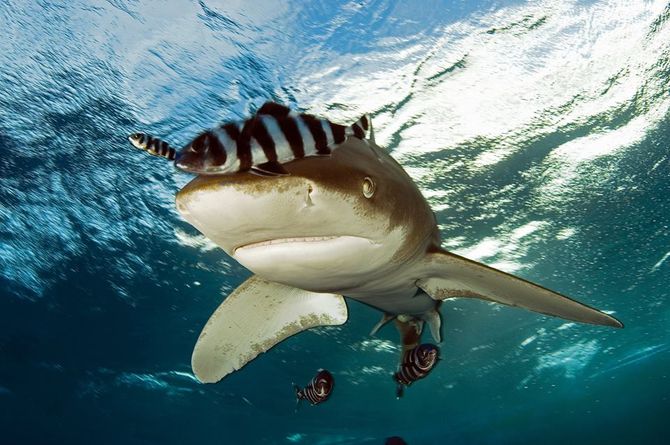Amazing creatures - 4 Sharks part 1
Sharks belong to a group of fish that are called Cartilaginous fish (Cartilaginous fish have their skeleton composed of calcified cartilage, not bones). There are more than 440 recorded species of sharks worldwide, ranging in size from only 17 centimeters (Dwarf lantern shark, a deep sea shark) to up to 12 meters (whale shark, the biggest fish on Earth). Sharks do not only vary in size but also in their feeding habits. All sharks are carnivores (animals that feed on meat). However, they feed on a wide range of animals. While the biggest sharks (including the whale shark) are filter feeders and use suction mechanisms to ingest plankton and small fishes, basking sharks are ram-feeders and swim with their mouth open through aggregations of plankton. As a top predator and being on top of their food chain it is not very likely for sharks to face any competition when it comes to food. However, some species tend to compete with each other. The silky and the oceanic whitetip shark, for example, compete in the feeding grounds for fish and squid; the winner is usually decided by size with the bigger one more likely to feed more. The life span of sharks varies from one species to another, but averages around 20-30 years. Whale sharks, however, might live more than 100 years. Being a fish, sharks produce eggs, but in contrast to other fishes the fertilized eggs of sharks are formed inside the body of the female. Depending on how the female shark is going to release the eggs, sharks are divided into three main groups; the first by which the eggs hatch in the oviduct and the young are born alive and functional (their first food being the remains of their egg, or in some cases their un-developed siblings).The second group are those who, like most fish, lay their eggs in the water, and the final and most complicated group of sharks are those who develop a placental link to the eggs inside the oviduct (characteristic of mammals)and the young are born alive and functional (i.e. Hammerhead Shark). In the reproductive season most fish change colour, producing odours, or building nests in order to attract females. A male shark, however, will bite the female to show her that he is interested! And this is not a gentle bite! We are talking about bites that will leave scars for the rest of the female’s life. In order to reproduce sexually, the male shark needs to insert his claspers (male sex organs) into the female’s oviduct. Some female individuals have been found with even deeper scars resulting from males grasping them to maintain position during mating. Scientists have found that female sharks have thicker skin than the males. This thickness will keep the female safe during the reproductive season from the male’s bites.



